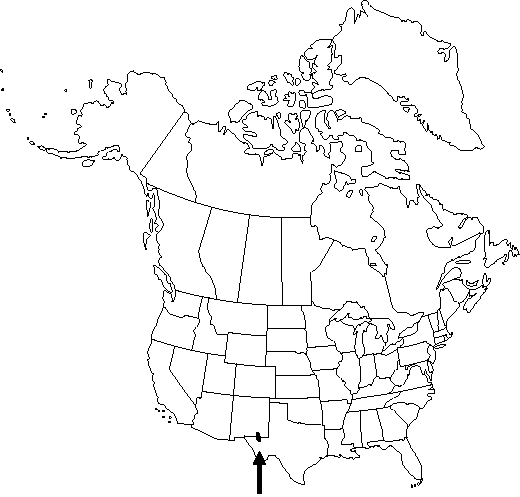Difference between revisions of "Aquilegia chaplinei"
Contr. U.S. Natl. Herb. 20: 156-157. 1918.
Conservation concernEndemic
Synonyms: Aquilegia chrysantha var. chaplinei (Payson) E. J. Lott
Treatment appears in FNA Volume 3.
FNA>Volume Importer |
FNA>Volume Importer |
||
| Line 34: | Line 34: | ||
|distribution=N.Mex.;Tex. | |distribution=N.Mex.;Tex. | ||
|discussion=<p>Of conservation concern.</p><!-- | |discussion=<p>Of conservation concern.</p><!-- | ||
| − | --><p>Aquilegia chaplinei is endemic to the Guadalupe Mountains.</p> | + | --><p><i>Aquilegia chaplinei</i> is endemic to the Guadalupe Mountains.</p> |
|tables= | |tables= | ||
|references= | |references= | ||
| Line 58: | Line 58: | ||
|publication year=1918 | |publication year=1918 | ||
|special status=Conservation concern;Endemic | |special status=Conservation concern;Endemic | ||
| − | |source xml=https://jpend@bitbucket.org/aafc-mbb/fna-data-curation.git/src/ | + | |source xml=https://jpend@bitbucket.org/aafc-mbb/fna-data-curation.git/src/8f726806613d60c220dc4493de13607dd3150896/coarse_grained_fna_xml/V3/V3_1058.xml |
|genus=Aquilegia | |genus=Aquilegia | ||
|species=Aquilegia chaplinei | |species=Aquilegia chaplinei | ||
Revision as of 17:13, 18 September 2019
Stems 20-50 cm. Basal leaves 2-3×-ternately compound, 7-25 cm, much shorter than stems; leaflets to 9-19 mm, not viscid, sometimes glaucous adaxially; primary petiolules to 10-95 mm (leaflets not crowded), glabrous or sparsely pilose. Flowers suberect to inclined; sepals perpendicular to floral axis, pale yellow, broadly lanceolate, 9-19 × 4-6 mm, apex obtuse to acuminate; petals: spurs yellow, straight, ± parallel or divergent, 30-40 mm, slender, evenly tapered from base, blades pale yellow, oblong, 7-14 × 5-6 mm; stamens 10-19 mm. Follicles 18-22 mm; beak 15-18 mm.
Phenology: Flowering summer (Jul–Aug).
Habitat: Rocky places in canyons, mostly along streams
Elevation: 1900 m
Discussion
Of conservation concern.
Aquilegia chaplinei is endemic to the Guadalupe Mountains.
Selected References
None.
Lower Taxa
None.
